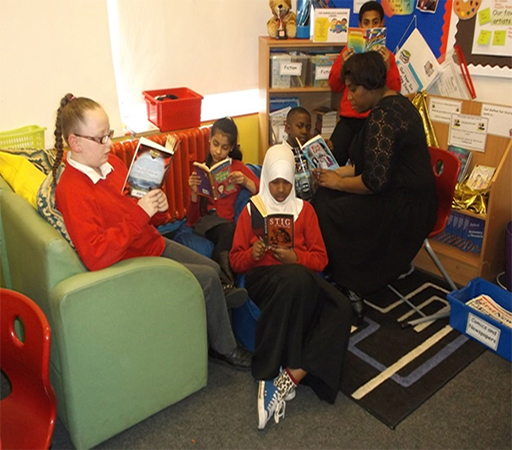1 Characteristics of reading communities
Before looking at the different characteristics that make up a reading community, complete Activity 1 to help you reflect on the reading community in your school.

Activity 1 Review your school reading community
To help you consider your understanding of reading communities, complete this self-review.
Reading for Pleasure: self-review [Tip: hold Ctrl and click a link to open it in a new tab. (Hide tip)] .
Make a note of areas of strength and areas for possible development.
Comment
Teachers recognise that valuing individual children and encouraging them to voice their views about what they are reading is important. However, time and the pressures of the curriculum often mean that the sorts of relationships that exist between children and teachers are founded on more formal exchanges, focused on reading instruction, phonics practice and set texts being studied as part of the literacy curriculum.
Research indicates that when teachers come to recognise, value and understand more about the social nature of reading (examined in Session 2) and develop as Reading Teachers, their practice shifts and new opportunities for interaction around texts develop (Cremin, 2021a). Other studies have also highlighted the significance of teachers as explicit reading role models and the value of readers interacting socially with one another in school (Tonne and Pihl, 2012).
Reading communities are typically characterised by reciprocity and interaction and in summary encompass:
- a shared concept of what it means to be a reader in the 21st century
- considerable teacher and child knowledge of children’s literature and other texts
- pedagogic practices which acknowledge and develop diverse reader identities
- new social spaces that encourage choice and child ownership of their own Reading for Pleasure
- spontaneous text-talk on the part of all participants
- a shift in the locus of control that fosters reader agency and independence.
Within such communities, Reading Teachers play a crucial role, to which you will now turn.
